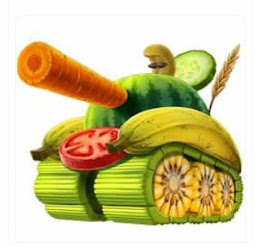Nutritional value per 1 tablespoon
Energy 469 kJ (112 kcal)
Fat 12.73 g
Saturated 7.926 g
Monounsaturated 3.678 g
Polyunsaturated 0.473 g
Protein 0.04 g
Minerals
Potassium 1 mg
Ghee is a class of clarified butter that originated in ancient India and is commonly used in South Asian cuisines, traditional medicine, and religious rituals
Ghee Preparation
Ghee is prepared by simmering butter, which is churned from cream, and removing the liquid residue.Spices can be added for flavor. The texture, color, and taste of ghee depend on the quality of the butter, source of the milk used in the process and the duration of the boiling.
Like any clarified butter, ghee is composed almost entirely of fat, 62% of which consists of saturated fats; the nutrition facts label found on bottled cow's ghee produced in the United States indicates 8 mg of cholesterol per teaspoon.
Indian restaurants and some households may use partially hydrogenated vegetable oil (also known as vanaspati, dalda, or "vegetable ghee") in place of ghee because of its lower cost. This "vegetable ghee" may contain trans fat. Trans fats have been shown to increase the risk of coronary heart disease even more so than saturated fats. The term shuddh ghee, however, is not used in many regions as partially hydrogenated oils are marketed as pure ghee in some areas. In India, the sale of fake ghee is stopped by law enforcement agencies whenever a complaint is made. Ghee is also sometimes called desi (country-made) ghee or asli (genuine) ghee to distinguish it from "vegetable ghee".
A 15-year-old boy pulled from ruins 5 days after the powerful April 2015 Nepal earthquake survived on nothing but two cans of ghee.
Fats & fatty acids
Indian restaurants and some households may use partially hydrogenated vegetable oil (also known as vanaspati, dalda, or "vegetable ghee") in place of ghee because of its lower cost. This "vegetable ghee" may contain trans fat. Trans fats have been shown to increase the risk of coronary heart disease even more so than saturated fats. The term shuddh ghee, however, is not used in many regions as partially hydrogenated oils are marketed as pure ghee in some areas. In India, the sale of fake ghee is stopped by law enforcement agencies whenever a complaint is made. Ghee is also sometimes called desi (country-made) ghee or asli (genuine) ghee to distinguish it from "vegetable ghee".
A 15-year-old boy pulled from ruins 5 days after the powerful April 2015 Nepal earthquake survived on nothing but two cans of ghee.
Fats & fatty acids
Amounts per 100 g of ghee
Total fat 99.5 g ( 153% DV)
Saturated fat 61.9 g (310% DV)
Monounsaturated fat 28.7 g
Polyunsaturated fat 3.7 g
Trans fats 4 g
Omega-3 fatty acids 1447 mg
Omega-6 fatty acids 2247 mg
Other non-fat nutrients
Amounts per 100 g of ghee
Carbohydrates 0
Minerals 0
Cholesterol 256 mg (85%DV)
Phytosterols 0
Vitamin A 3069 IU (61% DV)
Vitamin B, C, D 0
Vitamin E 2.8 mg (14% DV)
Vitamin K 8.6 µg (11% DV)
Minerals 0
Cholesterol 256 mg (85%DV)
Phytosterols 0
Vitamin A 3069 IU (61% DV)
Vitamin B, C, D 0
Vitamin E 2.8 mg (14% DV)
Vitamin K 8.6 µg (11% DV)
MEDICAL USES OF GHEE
Ayurveda considers pure un-adulterated ghee to be sāttvik or sattva-guṇi (in the "mode of goodness"), when used as food. It is the main ingredient in some of the Ayurvedic medicines, and is included under catuh mahā sneha (the four main oils: ghṛta, taila, vasā, and majjā) along with sesame oil, muscle fat, and bone marrow. Ghee is used preferentially for diseases caused by Pitta Dosha. Many Ayurvedic formulations contain ghee, for example, Brāhmi ghṛta, Indukānta ghṛta, Phala ghṛta, etc. Though eight types of ghee are mentioned in Ayurvedic classics, ghee made of human breast milk and cow's ghee are claimed to be excellent among them. Further, cow's ghee has medhya (intellect promoting) and rasāyana (vitalizing) properties. Ghee is also used in Ayurvedas for constipation and ulcers.Vechur cow Ghee produced using Vechur cow’s milk, is famous for its high medicinal values due to the presence of A2 beta-lactalbumin protein and higher arginine content which is good for the health of convalescing people.
In Sri Lankan indigenous medical traditions (Deshīya Cikitsā), ghee is included in pas tel (five oils: ghee, margosa oil, sesame oil, castor oil, and butter tree oil).
Ghee is hot and wet in the first degree, it is mild, and helps eliminate the various tumors that attack the soft parts of the body. Ghee is stronger than butter as a maturing agent.
Galinus said that he used Ghee to cure the tumors that occur in the ear and tip of the nose. When the base of children’s teeth is anointed with Ghee, the teeth will emerge faster.
When Ghee is blended with honey and bitter almonds, it will clear the chest and lungs and will dissipate various ailments. Ghee can be harmful for stomach, especially if a person has a mucus condition.
When Ghee made of cow and goat milk is mixed with honey, it helps against toxic materials, snake and scorpion stings.






.jpeg)
0 Comments